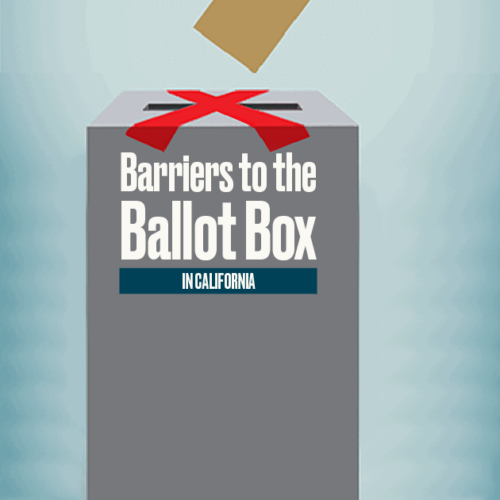Introduction
California has the most registered voters of any U.S. state: 20.9 million.
But getting those voters to the polls on Election Day has been a challenge. California has a history of low voter turnout. Only 49.6% of eligible voters in the state cast a ballot in the 2018 midterm elections. That was a record high for California, but it still ranked it behind 30 other states.
Sign up for The Moment newsletter
Our CEO Susan Smith Richardson guides you through conversations and context on race and inequality.
To increase participation, California lawmakers expanded vote-by-mail options and online registration. In 2018, the state began automatically registering drivers who are eligible to vote.
“California is, in many ways, a leader in ensuring equitable voter access,” said Natalie Masuoka, a political science and Asian American studies professor at the University of California, Los Angeles.
Unlike some states, California doesn’t require voters to show identification to cast a ballot, and people can register to vote on Election Day. Voters also don’t have to give a reason to request a mail-in ballot.
In May, in response to the spread of COVID-19, Gov. Gavin Newsom went a step further, announcing that all registered voters would receive a ballot in the mail in case they are afraid of voting in person in November.
Despite these laws, California has a history of voting rights violations, particularly against immigrants and Latinos.
Here’s a look at some of the most significant updates on restrictions to voting rights and access in the state:
Voting for non-English speakers
More than half of the state’s immigrants are naturalized U.S. citizens who can vote, but it’s not easy to find voting information in multiple languages.
Twenty seven of the state’s 58 counties are required under the federal Voting Rights Act to provide language assistance to voters who speak limited English, based on the percentage of residents who belong to a minority language group. For example, San Francisco County is required to provide voting materials in Spanish and Chinese.
But translated forms are often hard to find online. The Center for Public Integrity was unable to find voting information in Spanish on the elections websites of two counties: Imperial and Merced.
Both counties have large Latino communities and are required to provide voting information in Spanish under federal law.
Masuoka, of UCLA, said all California counties should provide voting materials in multiple languages, whether or not they are required to.
“We are a highly diverse state,” she said. “There are subpopulations that still need more services.”
Voting rights for parolees
California voters will vote in November on Proposition 17, a ballot measure that would grant voting rights to any eligible person who is not incarcerated. There are more than 50,000 people on parole in the state.
If voters approve the measure, California would join 17 other states in allowing parolees to vote. The measure is part of a growing national movement to restore voting rights to people who have been convicted of felonies. Last year, Florida passed a ballot measure that gave more than 1 million formerly incarcerated people the right to vote.
Polling place disruption
Earlier this year, Los Angeles County revamped its paper ballot system to include electronic voting. The county also changed its polling locations. Instead of assigning each voter to a nearby polling station during March’s primary election, voters could cast a ballot at any one of the new 978 “vote centers.”
There were just a few problems: The county was unprepared for equipment glitches and a deluge of primary voters. Some people reported waiting up to three hours to cast a ballot. Los Angeles County has 5.5 million voters, the largest voting bloc in California and larger than in 42 states.
The county said it has fixed the glitches and has 16,000 election workers to help decrease wait times in November.
Read more in Money and Democracy
US Polling Places
In Tennessee, trying to help voters could get you charged with a crime
Court fights mean more people can vote by mail to avoid coronavirus exposure. But state law targets voter-outreach efforts.
US Polling Places
In Connecticut, voters face some of the biggest obstacles outside the South
COVID-19 brings temporary changes, but the state constitution restricts permanent easing of voting access.


Join the conversation
Show Comments